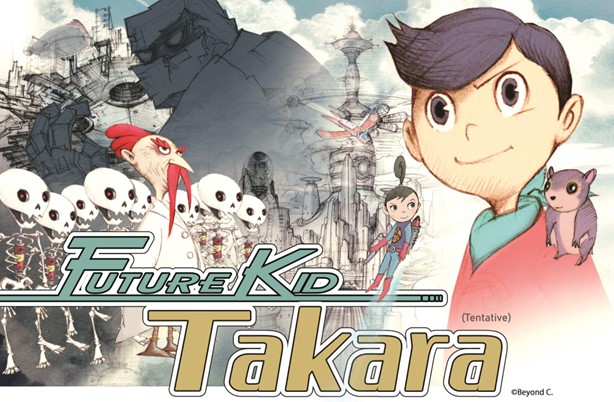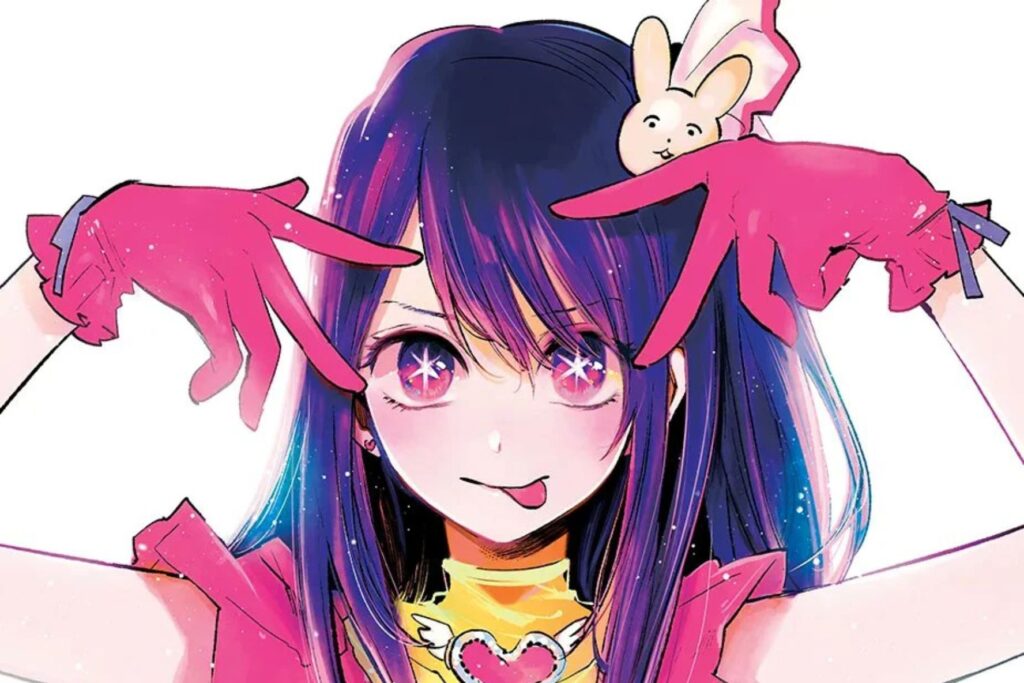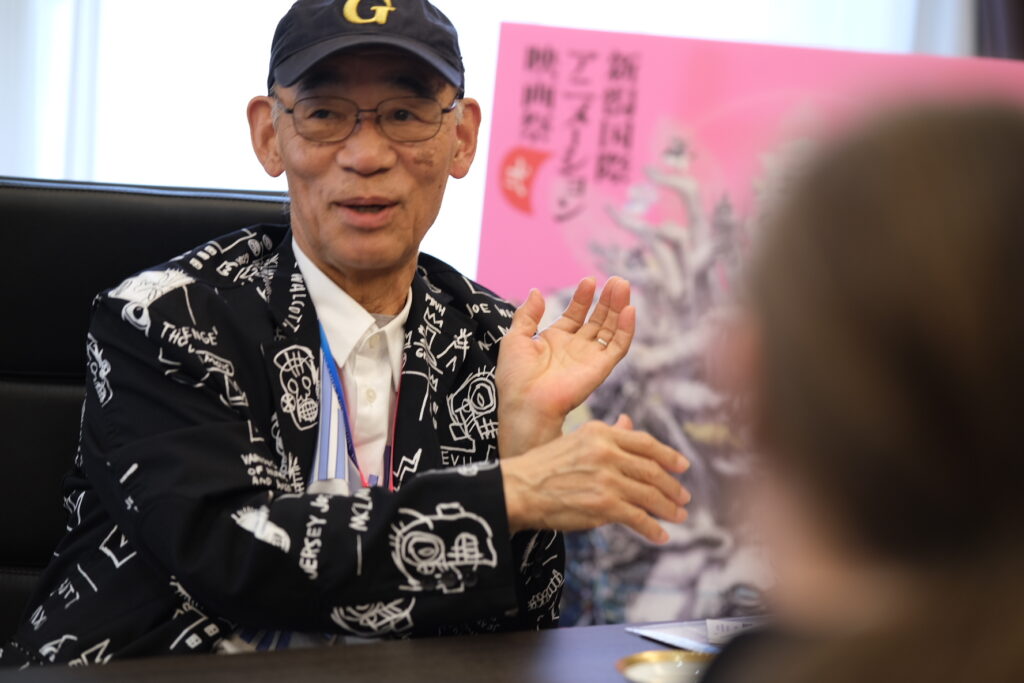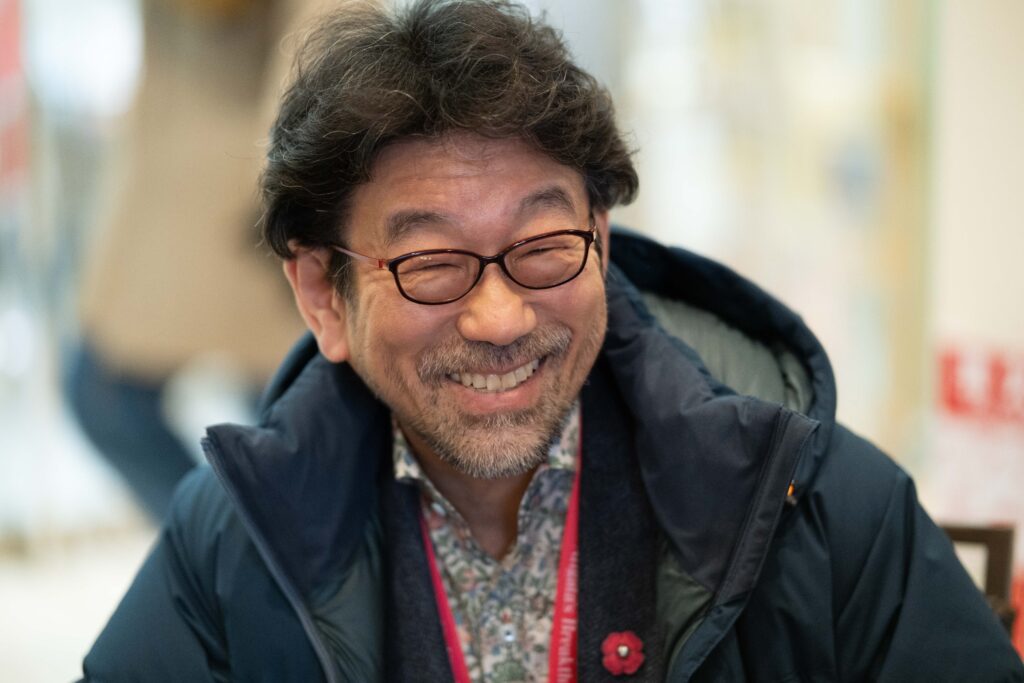Studio 4°C is one of the most famous animation companies in Japan. For decades, they have created many experimental films and have acquired a passionate fandom overseas. Right now, the studio is embarking on a new project which will require the help of such fans – a crowdfunding campaign for their next film, Future Boy Takara. This campaign is supported by JETRO, and you can read all about it here.
To learn more about this project, we had the opportunity to meet staff from Studio 4°C: Ms. Inoguchi and Ms. Saeki, from the Overseas Operations division of the studio, and Yuta Sano, the director of Future Boy Takara. The film is still under development and many things are still secret, but we took the occasion to ask Mr. Sano about his career and the development of 3DCG animation in Studio 4°C.
First, I’d like to ask about Studio 4°C. You’re already a very famous studio, so why this crowdfunding campaign?
Inoguchi: Our studio has a really long history, but it’s quite small. Moreover, we’re not owned by any company and are an independent studio. Therefore, we don’t have a stable income, so for each project we need to secure a budget by ourselves.
This time, first of all we needed to secure funds for the pilot, but more than that, we wanted to connect with our fans and our audience. Even before the launch of the project, we wanted to create a community and give them an opportunity to get to know the film at early stages and enjoy the production journey with us. That’s why we decided to do a crowdfunding campaign this time.
Has it become more difficult for independent studios like yours to make original projects today?
Inoguchi: Yes indeed. Because we’re independent, we don’t work with the same partners all the time. We have to find new partners and secure funding for each project. So it’s more difficult in that sense.
Is it the first time that Studio 4°C does a crowdfunding campaign like this?
Inoguchi: We did two crowdfunding projects in the past supported by other companies. One was for a project called Red Ash, the other one was for the bluray release of Mind Game.
The project that Studio 4°C is presenting this time is a 3DCG movie. Can you tell us a bit more about the studio’s history with 3DCG animation?
Sano: We’ve used CG since the early days of Studio 4°C, for example on Tekkonkinkreet. Basically, we used camera mapping for the backgrounds. As for character CG animation, we started using it on the Berserk movie trilogy. Since then, we’ve done both traditional 2D animation and 3DCG animation. One of the characteristics of our studio is that we’re really good at camera mapping, however, we don’t only focus on CG: we still do traditional 2D animation as well as hybrid animation that blends the two techniques. For us, CG is just another form of presentation for our work.
Nowadays, Studio 4°C isn’t the only studio in Japan to do increasingly more 3DCG-only works. What do you think are the advantages of a CG only-anime?
Sano: First, when it comes to CG animation, overseas studios are ahead of us. It’s quite difficult to adapt the Japanese approach to animation in CG, which is why various studios are making efforts to catch up. We still don’t have the answer to what “Japanese CG” is. However, we at Studio 4°C don’t think CG animation should aim to replace traditional animation. Our goal is to go one step further and create a Japanese “new CG”. Some elements are unique to CG animation, while others are unique to Japanese animation, like the movement and the poses of characters. By combining these we are trying to create a “new CG”.
Studio 4°C worked a lot with foreign studios on co-productions. Can you tell us more about how these collaborations happened and the differences between working with Japanese and overseas studios?
Saeki: Are you referring to works such as Animatrix?
Yes, for example.
Saeki: Basically the studios come to us, we hear what they want to do and we propose what we’d like to do. That’s what happened for Animatrix, Batman and Halo Legends. There are some cultural differences but they don’t cause too many issues and the experience always turns out to be interesting.
Now, I’d like to ask a few questions to Mr. Sano about his career. First, can you please tell us why you decided to work with 3DCG animation?
Sano: I always liked Star Wars and was really interested in space, and first I studied astrophysics. But I realized this wasn’t what I really wanted to do. Since I liked movies and drawings, I wondered if I couldn’t work in that instead. Moreover, I grew up watching movies such as Star Wars and Jurassic Park and I was always interested in CG and its possibilities. But I didn’t have any background in art, so first I researched the film and CG industries, and found out that there are three main categories of work for CGI: animation, modeling and effects. I thought animation would be the most interesting because when you make a character move, you become a bit like the character. So my starting point wasn’t animation itself but my love for movies in general. During my research, I realized how vast and diverse animation in Japan is, and found out about Studio 4°C, which did very unique and interesting works. That’s why I decided to join.
Was there any specific title made by Studio 4°C that caught your eye?
Sano: The one that caught my eye the most would be Mind Game.
Ah, I understand that!
Your first work as an animator was on the Berserk movies. Can you tell us about your work and your memories of that production?
Sano: CG staff at Studio 4°C are generalists, meaning that we basically have to do everything. We do prop modeling, character modeling, 3D animation and a lot of other things. We made three Berserk movies, each of which was made up of approximately 1500 cuts. Among these, I would do around 400. There are many characters in Berserk, sometimes there are 20 to 30 on screen. The time given to us was very limited, so we had to work very fast. I had to do around 3 cuts a day. It was a tremendous amount of work. For the third movie, I had to draw 80 cuts of storyboard as well. I joined the studio at a very busy time and didn’t sleep a lot for the first three years. Nonetheless I really enjoyed working with the rest of the CG staff at Studio 4°C.
More recently, we worked on the Memorial edition of the Berserk trilogy, which is a new cut of the movies for the TV format. I worked as director for this Memorial edition. We added some new scenes and updated some of the CG and modeling as well. It was the first time in almost ten years that we were able to revisit that work, it was very nostalgic and lots of good memories came back to me.
Oh, so you also did storyboards! That was a very quick promotion considering you had just joined the studio. Do you know why you were promoted so quickly?
Sano: I did these storyboards during my second year in the studio. At the time, everyone was extremely busy and we were really short on staff. It was very difficult, but precisely because of that, I learnt a lot very fast. And then, for the Eclipse scene in particular, because the backgrounds are in CG, the director struggled to understand the spatial structure and it was difficult for him to draw the storyboards. That’s why he came up with the idea of having the 3D staff make some of it: the 3D backgrounds were already complete, and we used those as a base. Myself and 2 other CG artists were selected to work, even though we were originally working on CG animation. So we did a sort of 3D storyboard, alongside sorts of rough 3D layouts.
When you do storyboards for your own projects now, do you draw it on paper like people do in 2D animation or is it CG from the start?
Sano: I mostly draw it on paper first. If I start with 3D, I feel like I see the real things, and that blocks my imagination. I want to draw storyboards from my imagination, so for that I need to draw things on paper first.
Now, can you tell us about the first movie you directed, Red Ash?
Sano: Red Ash was a 20-minute full 3D movie. Berserk was mainly a 2D work with some CG elements, but Red Ash was the first full CG animation we made at Studio 4°C. Even though it was a short 20-minute film, it was a very big challenge for us. It was my first time as a director, and I also wore the hat of CG director as well. We also had to train new staff that had joined recently on CG animation. Since we were short on staff, I had to train them while doing 3D modeling and rigging. It was very difficult, but we were able to experiment a lot with what we wanted to do.
For example, we put textures on character models, to create an illustration-like style, which wasn’t common at all at the time. It’s also very common to have outlines in Japanese animation. However, we decided not to use outlines on Red Ash, which is closer to the American or European style of doing animation. But we still wanted to keep a very Japanese way of expressing emotions and creating movement. In that sense it was a very experimental title. It was a good way of letting people know that Studio 4°C can produce that kind of animation.
You mentioned textures on character models. These are also very special in Poupelle of Chimney Town, which uses a kind of cel shading. Could you explain the process you used in more detail?
Sano: I wasn’t involved that much in the shading for Poupelle. When it comes to CG animation, most times, things are created in monochrome. We wanted to do something a bit different by adding textures on 3DCG so we went for cel shading. Originally, Poupelle is a picture book, so we wanted to get the same texture as the picture book. We had our experience on Red Ash so we basically followed the same method. However, for Red Ash, when we added the textures we also added the colors for rendering. On Poupelle, the colors were added during the compositing phase, so the textures themselves are black and white, and the colors were added during compositing. That’s the main difference between Red Ash and Poupelle.
I believe you were credited as animation director on Poupelle, can you tell us what this work entailed concretely?
Sano: As the animation director I was basically involved with everything that moves in the movie. If a prop moved, that was also my responsibility. The effects were directly supervised by the director but everything else, including the character animation, was under my direction. I talked a lot with the director about the characters’ emotions or motivations in each scene and had to think about the most appropriate movements or atmosphere for each character and each scene. Then I planned things out and gave my directions to the animators. Sometimes they had to redo their work to reach the intended result and I sometimes added corrections myself. That was my role as animation director.
Now, I would like to talk about the project you’re currently presenting. I know it’s still in development, but what can you tell us about it for now?
Sano: The theme of this project is environmental challenges. We want to create a sci-fi adventure fantasy. I’m still working on the scenario so I still don’t know exactly where this will go, but we want to create something exciting for our audience.
One more question. The characters in the visuals you shared remind me a bit of Osamu Tezuka’s style. Was it an inspiration for you?
Sano: The character designer on that work is Mr. Shinji Kimura, a very distinct background artist who worked on various titles such as Tekkonkinkreet. He has a bit of a nostalgic style. That’s probably why it reminds you of Osamu Tezuka. I’m not sure if Mr. Kimura was influenced by Tezuka, but I personally love Tezuka’s works. Mr Kimura’s designs are very heartwarming and I wanted to bring that heartwarming aspect to 3D animation. As a background artist, what he designs is a bit difficult to express with hand drawings, so I think CG can have an advantage here. But at the same time, 3D can be a bit cold, so we want to avoid that and keep the heartwarming aspect of Mr. Kimura’s designs with 3D.
Do you have a final message for the fans who will support the campaign?
Sano: This movie will be about global warming, that’s the theme, but we also want to surprise you and bring you the best entertainment possible. We want to do that while making you think about environmental challenges. I believe that this is possible thanks to Japanese animation. Please look forward to our new 3DCG project.
All our thanks go to the Studio 4°C team for their time and to the JETRO Marketing division for their help in organizing this interview.
Interview and transcription: Matteo Watzky
Like our content? Feel free to support us on Ko-Fi!
Oshi no Ko & (Mis)Communication – Short Interview with Aka Akasaka and Mengo Yokoyari
The Oshi no Ko manga, which recently ended its publication, was created through the association of two successful authors, Aka Akasaka, mangaka of the hit love comedy Kaguya-sama: Love Is War, and Mengo Yokoyari, creator of Scum's Wish. During their visit at the...
Ideon is the Ego’s death – Yoshiyuki Tomino Interview [Niigata International Animation Film Festival 2024]
Yoshiyuki Tomino is, without any doubt, one of the most famous and important directors in anime history. Not just one of the creators of Gundam, he is an incredibly prolific creator whose work impacted both robot anime and science-fiction in general. It was during...
“Film festivals are about meetings and discoveries” – Interview with Tarô Maki, Niigata International Animation Film Festival General Producer
As the representative director of planning company Genco, Tarô Maki has been a major figure in the Japanese animation industry for decades. This is due in no part to his role as a producer on some of anime’s greatest successes, notably in the theaters, with films...





Recent Comments